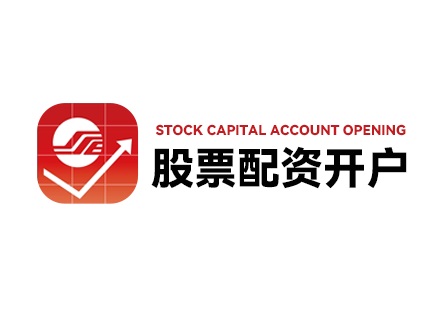 配资炒股平台_线上配资炒股/配资炒股投资-配资平台
配资炒股平台_线上配资炒股/配资炒股投资-配资平台
Exploring the World of Stock Margin Trading

Stock margin trading refers to the practice of using borrowed funds to trade stocks in the market. It offers traders the opportunity to leverage their investments and potentially earn higher returns. In this article, we will delve into the world of stock margin trading and analyze various aspects of this practice.
Capital Utilization Flexibility
One of the key advantages of stock margin trading is the flexibility it offers in terms of capital utilization. Traders can leverage their existing capital and borrow additional funds to increase their buying power in the market. This allows them to take advantage of more trading opportunities and potentially amplify their profits.
Risk Prediction
However, with increased leverage comes higher risk. It is essential for traders to accurately predict and manage the risks involved in stock margin trading. Proper risk assessment and risk management strategies are crucial for mitigating potential losses and maximizing returns.

Stock Trading
Stock margin trading involves buying and selling stocks on borrowed funds. Traders must be well-versed in stock market dynamics and have a solid understanding of the trading process. Proper research and analysis are essential for making informed trading decisions and optimizing performance.
Market Transparency Measures
To ensure fair and transparent trading practices, regulatory authorities have implemented various market transparency measures. These measures aim to provide traders with access to reliable market information and protect investors from fraudulent activities.
Market Trend Analysis
Market trend analysis is a crucial component of stock margin trading. Traders need to analyze market trends, patterns, and indicators to identify potential trading opportunities. Technical and fundamental analysis can help traders make informed decisions and capitalize on market trends.
Trading Decision Management Optimization
Effective trading decision management is essential for success in stock margin trading. Traders must develop robust trading strategies, set clear profit targets and stop-loss levels, and continuously monitor their positions. By optimizing trading decision management, traders can enhance their overall performance and achieve their trading goals.
From the perspective of development prospects, innovation, and industry insights, stock margin trading presents a promising and dynamic landscape. With advancements in technology and trading platforms, traders have access to a wealth of resources and tools to enhance their trading experience. Innovation in trading algorithms, risk management techniques, and market analysis methods continues to drive the evolution of stock margin trading.
In conclusion, stock margin trading offers traders the opportunity to leverage their investments and maximize their trading potential. By carefully managing risks, analyzing market trends, and optimizing trading decisions, traders can navigate the complexities of stock margin trading and achieve their financial objectives.
- 08-01七星策略分析与交易计划
- 08-01股票配资合法性综述及风险管理分析
- 08-01炒股最高几倍的综合分析及投资策略探讨
- 08-01炒股配资网址的综合性分析
- 08-02京海策略:探秘股票配资资讯
- 08-01全面介绍炒股App的高效市场策略与风险控制
- 08-01股票配资国家规定及相关分析
- 08-01深入介绍配资行情网
- 08-01国汇策略:交易权限、股票交易分析、规模比较、投资回报管理、市场形势跟踪、投资技巧详细探讨
- 08-01如何提高股票配资成功率:平台稳定、经济周期、财务策略、投资效益管理等因素详解
- 08-01股票配资管家的全方位分析及高效操作策略
- 08-01深度分析:福州股票T0配资的资金安全与风险探讨
- 08-01蜀商证券投资效益管理和风险控制策略分析
- 08-01精准股票配资策略分析
- 08-01股票配资全面分析与解读
- 07-31股票配资法律以及资金利用率提升的详细探讨
- 08-01股票配资在当前券商市场的综合性探讨
- 08-01联华证券资金运作全面分析及市场研判报告
- 08-01青岛正规股票配资公司全方位探讨
- 08-02Exploring the World of Stock Margin Trading
- 07-31深度探讨配资炒股入门和投资管理
- 08-02探讨配资平台开户相关问题
- 08-01股票行情深度分析
- 08-01如何最大化股票投资收益与风险评估
- 08-01深度分析:天山生物股票配资综合分析
- 08-01炒股指平台全方位分析及投资策略讨论
- 08-01系统性探讨配资股相关问题
- 08-01十大配资平台投资攻略
- 08-01深入讨论股票正规交易平台的关键领域
- 08-01配资股票不能卖出的详细分析
- 08-01熊市行情下股票配资的优势及投资策略详解
- 08-01全方位股票交易平台分析及服务流程
- 08-01深度分析:炒股10倍平台
- 08-01探讨2015年正规股票配资平台的全方位介绍及分析
- 08-01探讨原油期货配资与股票配资的综合分析及展望
- 08-02深度分析:邹平股票配资平台的特点与未来发展
- 08-01深入探讨惠州大亚湾股票配资公司的综合分析
- 08-02股票平台排行的深度分析
- 08-01探讨杨方配资平台融资股票的综合分析
- 08-01深入探讨资深炒股配资门户
- 08-01深度分析:网上配资炒股操作心得与策略
- 08-01股票配资保证金分析与优化策略
- 08-01鼎盛证券:交易速度、投资规划管理和风险控制领先业界
- 08-01深度分析:扬帆配资不能出金的问题
- 08-02如何分析网上股票配资的潜在风险与收益
- 08-01股票配资免息开户全面分析
- 08-02配资咨询的综合性说明
- 08-02谨慎评估证配所的股票操作技术指南及配资要点
- 08-01股票配资利息分享及实操经验
- 08-01深度探讨配资网站的关键因素